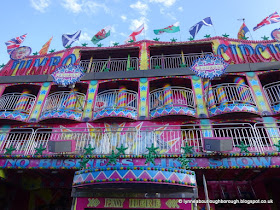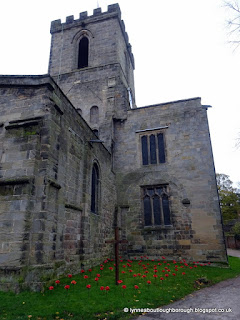Having been a bit under the weather this last week, I haven't researched much of Loughborough's history, but did at least manage to get out into town to see some of the sights and some of the Christmas light switch-on. There may be some clues to future posts in the pics that follow!
 |
| Through a chink in the smoked glass |
 |
| What will this Ladybird Collective turn into? |
 |
| Ghostly goings-on at Russell Smiths |
 |
| Party goings-on in the Town Hall |
 |
| The bright passage |
 |
| Christmas market |
 |
| Christmas market |
 |
| Festive food |
 |
| Festive music |
 |
| More festive music |
 |
| Festive Freeman! |
 |
| Festive singing |
 |
| Market stall |
 |
| The BIG TV! |
 |
| The Christmas tree |
 |
| The indoor craft market |
 |
| A rare quiet moment at the indoor craft market |
You are welcome to quote passages from any of my posts, with appropriate credit. The correct citation for this looks as follow:
Dyer, Lynne (2019). Around town. Available from: https://lynneaboutloughborough.blogspot.com/2019/11/around-town.html [Accessed 24 November 2019]
Take down policy:
post no pictures that are not my own, unless I have express permission so to do. All text is my own, and not copied from any other information sources, printed or electronic, unless identified and credited as such. If you find I have posted something in contravention of these statements, or if there are photographs of you which you would prefer not to be here, please contact me at the address listed on the About Me page, and I will remove these.
Thank you for reading this blog.













































